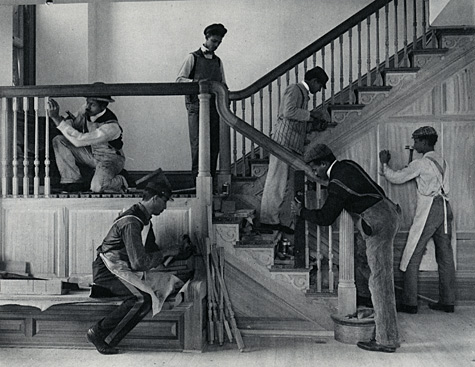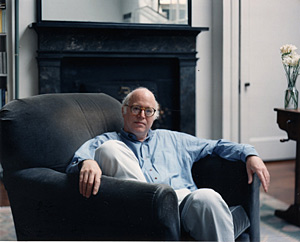
****** THIS LECTURE HAS BEEN CANCELLED DUE TO UNFORESEEN CIRCUMSTANCES ******
Learning to live with people unlike ourselves — racially, ethnically, religiously or economically — is arguably the most urgent challenge facing civil society today.
Yet much of modern life, from talk radio to homogenous neighborhoods to the self-segregation of social media, encourages the us-against-them politics of the tribe, rather than the more cooperative spirit of the city.

In his latest book, Together: The Rituals, Pleasures and Politics of Cooperation (2012), the distinguished sociologist and urban theorist Richard Sennett examines why this has happened and what might be done about it.
At 6:30 p.m. Wednesday, April 18, Sennett will present the Sam Fox School’s annual Eugene J. Mackey Jr. Lecture.
The free talk — titled “The Architecture of Cooperation” — is co-sponsored by the Brown School and takes place in Steinberg Hall Auditorium. A reception for Sennett will precede the lecture at 6 p.m.
For more information, call (314) 935-9300 or visit samfoxschool.wustl.edu.
Beginning with his first book, The Uses of Disorder, in 1970, Sennett has explored the ways individuals and groups make social and cultural sense of material facts — about the cities in which they live and about the labor they do.
In Together, Sennett contends that cooperation is a craft, and the foundations for skillful cooperation lie in learning to listen well and discuss rather than debate. He traces the evolution of cooperative rituals from medieval times to today, and in situations as diverse as slave communities, socialist groups in Paris and workers on Wall Street.
Sennett is author of more than a dozen books, including The Hidden Injuries of Class (1972), which studies how working-class identities are shaped in modern societies; The Conscience of the Eye (1990), a work focusing on urban design; and Flesh and Stone (1992), a general historical study of how bodily experience has been shaped by the evolution of cities.
Eugene J. Mackey Jr. Lecture
This endowed lecture honors Eugene J. Mackey Jr., a distinguished architect who practiced in partnership with Joseph Murphy, former dean of the School of Architecture.
Among other projects, Mackey and Murphy designed John M. Olin Library and collaborated with R. Buckminster Fuller on the design of the Missouri Botanical Garden’s Climatron.
The Eugene J. Mackey Jr. Lecture brings significant patrons of architecture to campus. Past lecturers have included Gerald Edelman, Thomas Krens, Jorma Ollila, Emily Pulitzer, Richard Jackson, Eric J. Cesal and Alan Webber.